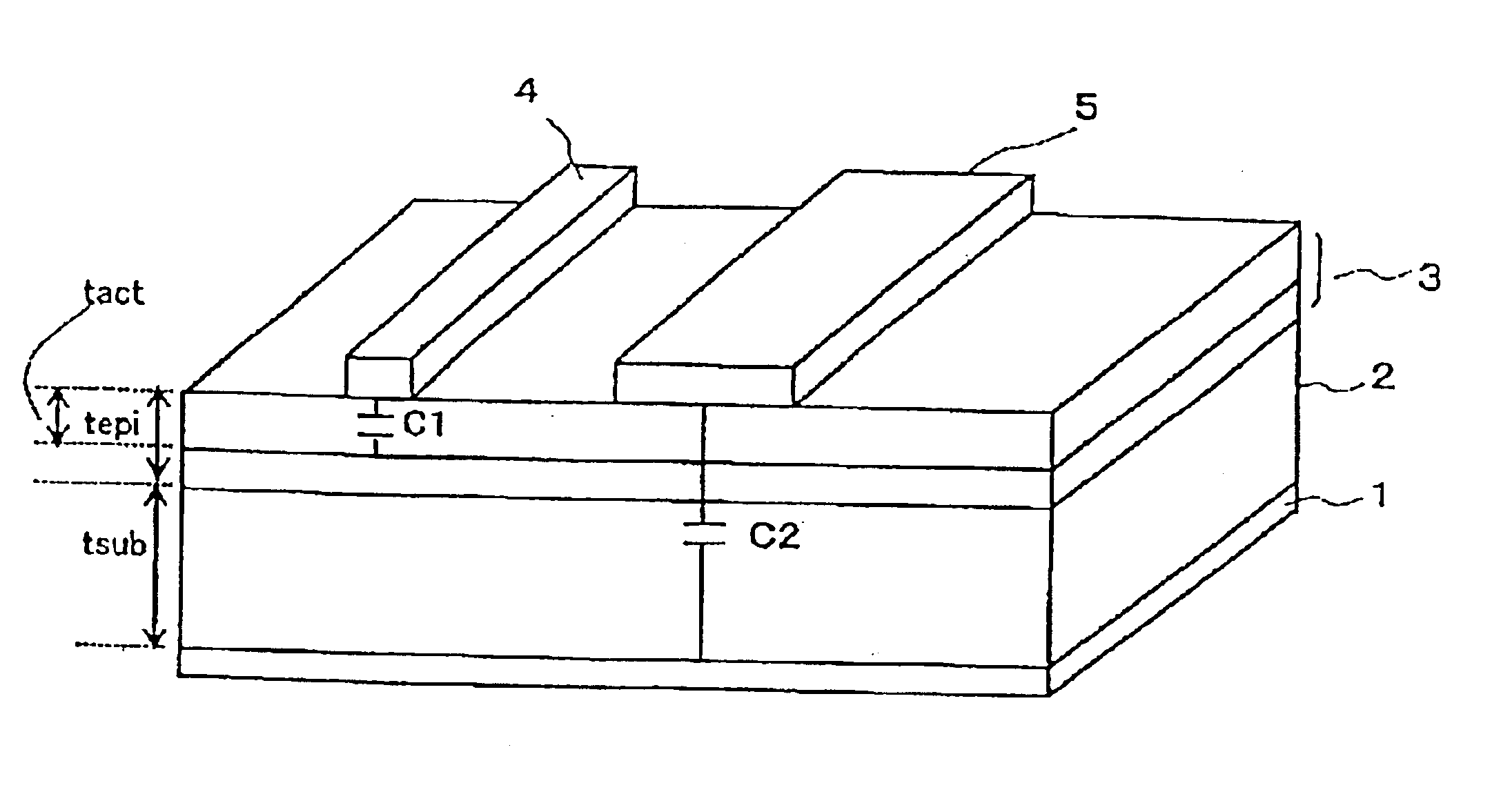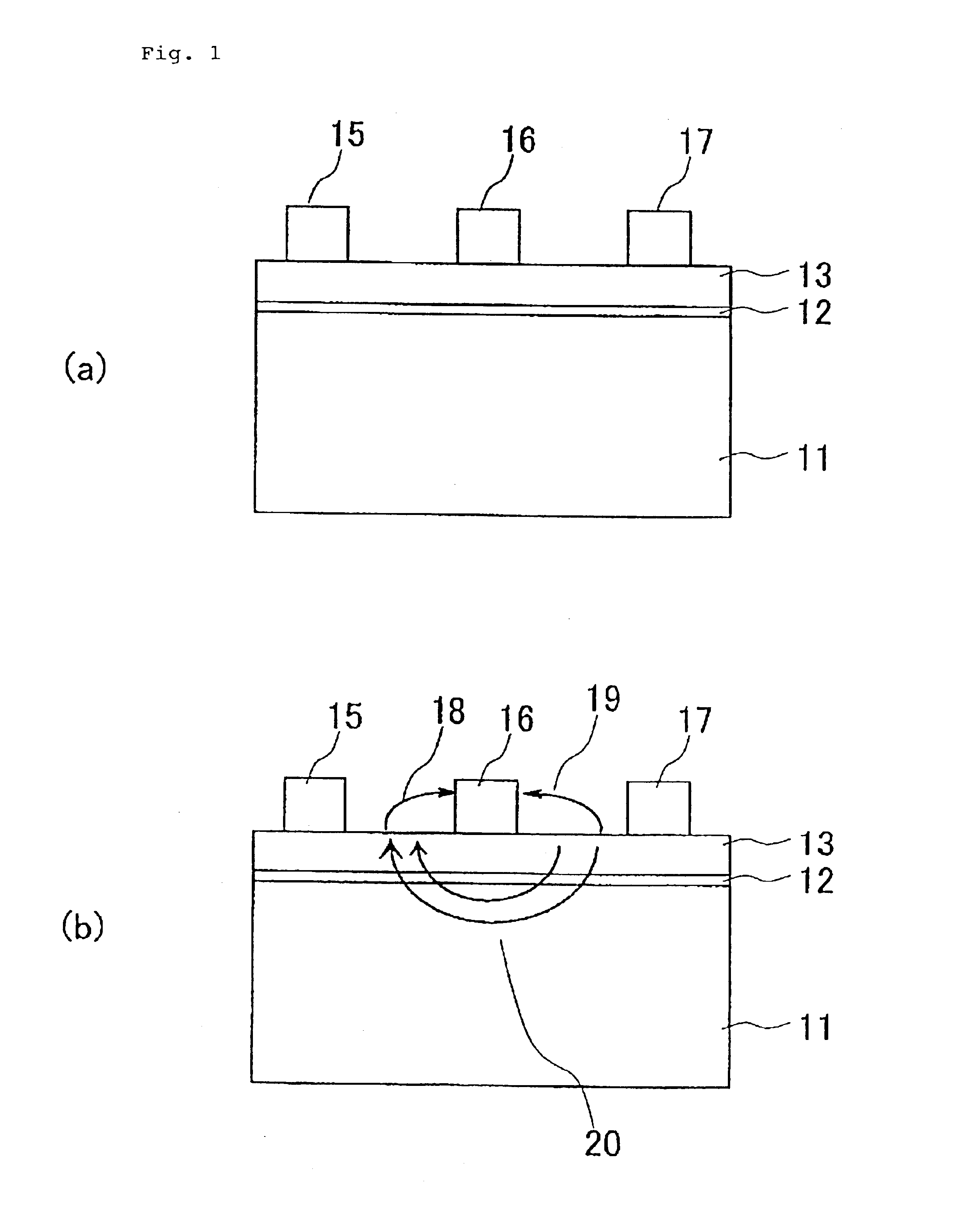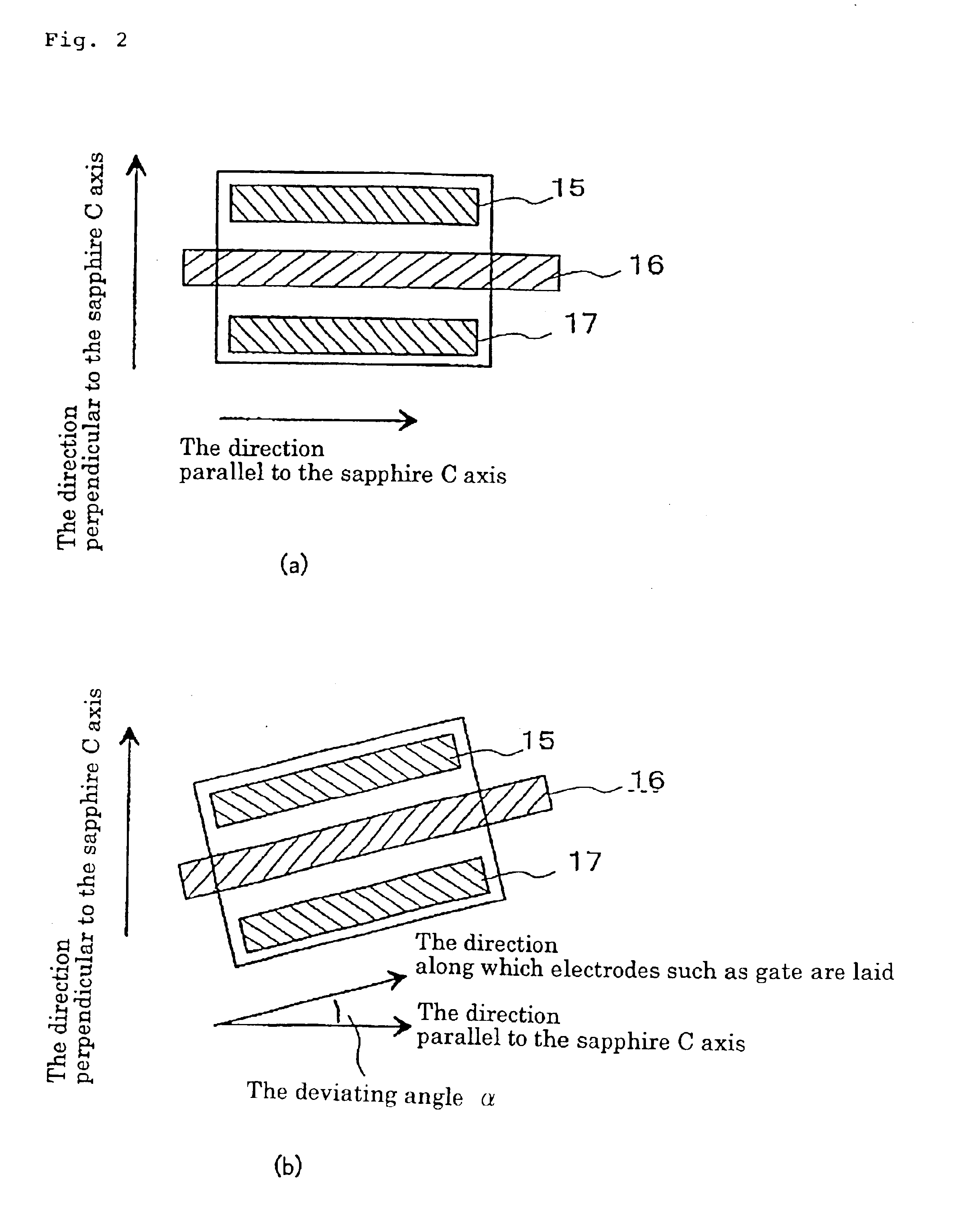Group III nitride semiconductor device of field effect transistor type having reduced parasitic capacitances
a semiconductor device and parasitic capacitance technology, applied in the direction of semiconductor devices, basic electric elements, electrical appliances, etc., can solve the problems of difficult to improve radiation characteristics, high cost, and difficulty in achieving a large wafer area, and achieve excellent performance in high-speed operation.
- Summary
- Abstract
- Description
- Claims
- Application Information
AI Technical Summary
Benefits of technology
Problems solved by technology
Method used
Image
Examples
example 1
FIG. 1 shows the structure of an AlGaN / GaN heterojunction FET of the present example. This FET was fabricated by a process which comprises the steps of growing a gallium nitride semiconductor layer upon an A plane sapphire substrate (the principal plane thereof is a (11-20) plane) with a diameter of 8 inches, forming electrodes and so on, and thereafter polishing the substrate to a thickness of 30 .mu.m and then breaking into chips.
The manufacturing method thereof was the similar one to that mentioned in "Bst Modes for Carrying out the Invention" above. An annealing after cleaning of the substrate surface was performed in oxygen at 1200.degree. C. The growth temperature for a low-temperature buffer layer 12 was set at about 650.degree. C., and for other layers 13 at about 1050.degree. C., respectively. The epitaxial layers 13 were made to have a structure wherein the following layers were laid in this order: that is
an AlN buffer layer (with a thickness of 100 .mu.m);
a GaN layer (wit...
reference example 1
Subjecting a HEMT shown in FIG. 8 to analysis where a GaN based semiconductor layer 81 is formed upon a sapphire substrate 80 and a source electrode 82, a gate electrode 83 and a drain electrode 84 are formed thereon, the dependences of thermal resistance and surface average temperature on substrate thickness were obtained by simulation. The calculated results are shown in FIG. 7. The thermal resistance and surface average temperature each decrease with decreasing the substrate thickness, and show a marked decrease, especially in the region of thickness of 50 .mu.m or less. These results confirm that, by setting the thickness of the sapphire substrate to be 50 .mu.m or less, a noticeable effect to heat diffusion can be attained.
reference example 2
A sapphire substrate with a thickness of 300 .mu.m wherein an A plane was set to be the principal plane and another sapphire substrate with a thickness of 300 .mu.m wherein a C plane was set to be the principal plane were prepared, and, after polishing, close inspection of their aspects were conducted. In the sapphire substrate wherein a C plane was set to be the principal plane, cracks appeared when its thickness came down to 70 .mu.m or so. In contrast, in the sapphire substrate wherein an A plane was set to be the principal plane, cracks did not appear, even when the substrate thickness became as thin as 30 .mu.m, showing nothing abnormal in appearance.
PUM
 Login to View More
Login to View More Abstract
Description
Claims
Application Information
 Login to View More
Login to View More - R&D
- Intellectual Property
- Life Sciences
- Materials
- Tech Scout
- Unparalleled Data Quality
- Higher Quality Content
- 60% Fewer Hallucinations
Browse by: Latest US Patents, China's latest patents, Technical Efficacy Thesaurus, Application Domain, Technology Topic, Popular Technical Reports.
© 2025 PatSnap. All rights reserved.Legal|Privacy policy|Modern Slavery Act Transparency Statement|Sitemap|About US| Contact US: help@patsnap.com



